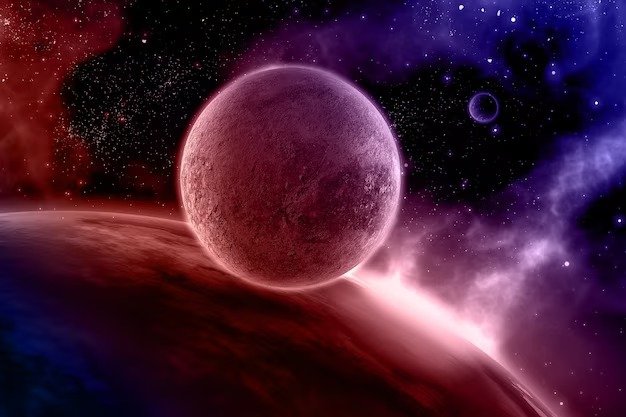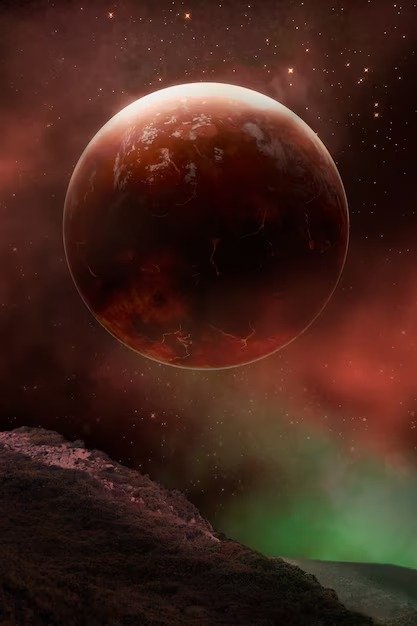Introduction
Venus, our neighboring planet, has long been a subject of fascination and mystery. In this extensive exploration, we embark on a comprehensive journey to unravel the myriad features and characteristics that define this celestial body. As the second rock from the Sun, Venus offers a unique perspective on planetary science, climate dynamics, and comparative planetology. Our mission is to delve into the intricate details of Venus’s atmosphere, surface, and peculiar qualities, providing a nuanced understanding of the enigmatic world that resides just next door in our solar system.
Proximity to the Sun
A Scorched World
Venus, with its close proximity to the Sun, experiences extreme temperatures that set it apart in our solar system. Dive into the intricacies of its scorching surface conditions, where temperatures can soar high enough to melt lead. Explore the greenhouse effect that plays a crucial role in trapping heat, making Venus the hottest planet in our cosmic neighborhood. Understand the implications of such proximity to the Sun on the planet’s overall climate, weather patterns, and geological processes.
Atmosphere
Thick Veil of Clouds
The atmosphere of Venus presents a distinctive and mysterious environment. Explore the composition and dynamics of the thick cloud cover, primarily composed of sulfuric acid. These dense clouds obscure the planet’s surface from direct observation, adding an extra layer of complexity to the study of Venus. Examine the challenges and opportunities presented by this unique atmospheric condition for observational studies, and unravel the mysteries behind the formation and persistence of these clouds.
Atmospheric Circulation
Delve into the complex atmospheric circulation patterns of Venus, where super-rotational winds can reach speeds of up to 360 km/h (224 mph). Investigate the factors influencing this rapid rotation and its consequences on the planet’s climate. Understand how the atmospheric circulation shapes Venus’s weather patterns, creating a dynamic and intriguing environment distinct from other planets in our solar system.
Surface Features
Venusian Topography

Venture into the diverse and intriguing topography of Venus, where highland plateaus, vast plains, and extensive volcanic structures paint a picture of a dynamic landscape. Examine the various geological formations, including impact craters, mountain ranges, and volcanic calderas, unraveling the story of Venus’s geological history. Explore the high-resolution radar imagery captured by missions like Magellan, providing invaluable insights into the planet’s surface features.
Tectonic Activity
Unlike Earth, Venus lacks tectonic plates, yet its surface exhibits signs of tectonic-like features. Investigate the nature of Venusian tectonics, exploring how these features shape the planet’s geology and contribute to its unique surface characteristics. Analyze the implications of the absence of traditional plate tectonics for Venus’s geological evolution and the dynamic processes that have sculpted its surface.
Volcanic Activity
Venus’s Fiery Past
Explore the evidence of past and potentially ongoing volcanic activity on Venus, a phenomenon that contributes significantly to the planet’s geological dynamics. Uncover the impact of volcanic formations on the planet’s surface and atmosphere, providing valuable insights into the dynamic geological processes that have shaped Venus over millions of years. Examine the data gathered from missions like Magellan to create a comprehensive understanding of Venus’s volcanic history.
Active Volcanoes
Investigate the possibility of active volcanoes on Venus, a hypothesis supported by observations of transient infrared hotspots. Analyze the implications of ongoing volcanic activity on the planet’s surface conditions, atmospheric composition, and overall geological vitality. Explore the challenges and opportunities presented by the study of Venusian volcanism, shedding light on the dynamic nature of the planet’s geologic processes.
Rotation and Retrograde Motion
A Slow and Unusual Spin
Venus’s rotation is both slow and exhibits retrograde motion, a phenomenon where the planet rotates in the opposite direction to its orbit around the Sun. Delve into the mechanisms behind this unusual rotational behavior, exploring how it influences Venus’s day-night cycle and contributes to the complex dynamics of its atmosphere. Investigate the factors that have led to this unique spin, unraveling the mysteries of Venus’s rotational characteristics.
Atmospheric Superrotation
Uncover the mysteries of Venus’s atmospheric superrotation, where the upper atmosphere rotates much faster than the planet’s surface. Examine the factors driving this phenomenon and its impact on the planet’s climate, weather patterns, and overall atmospheric dynamics. Understand how atmospheric superrotation contributes to the peculiarities of Venus’s atmospheric circulation, creating a dynamic and complex system.
Exploration Missions
Unveiling Venus Up Close
Take an in-depth look at the various space missions dedicated to studying Venus, with a primary focus on NASA’s Magellan and the European Space Agency’s Venus Express. Examine the data collected by these missions, including high-resolution radar imagery, atmospheric observations, and gravity mapping, providing critical insights into Venus‘s geological composition and behavior.
Upcoming Missions
Explore the potential for future Venus exploration missions, such as NASA’s VERITAS (Venus Emissivity, Radio Science, InSAR, Topography, and Spectroscopy) and ESA’s EnVision. Understand the objectives of these missions, including mapping Venus’s surface topography, studying its geologic history, and unraveling the mysteries of its atmosphere. Evaluate the scientific questions these missions aim to address and the technological advancements that will contribute to our understanding of Venus.
Comparative Planetology
Lessons from Venus
Draw comparisons between Venus and Earth, uncovering the fundamental differences and surprising similarities that offer valuable lessons in planetary science. Explore the implications of Venus’s extreme conditions for our understanding of habitability in the broader cosmos. Consider the role of comparative planetology in deciphering the mysteries of planetary evolution and the potential for life beyond our home planet.
Venus and Earth’s History
Explore the shared history of Venus and Earth, considering their divergent evolutionary paths. Investigate the factors that led Venus to become a hostile, inferno-like world while Earth developed into a haven for life. Reflect on the broader implications for understanding planetary evolution, climate dynamics, and the potential for habitability in our galaxy.
Conclusion
As our extensive exploration of “Venus: The Second Rock from the Sun – Understanding the Planet’s Features and Characteristics” draws to a close, we emerge with a profound and enriched comprehension of this mysterious neighboring planet. From the scorching temperatures on its surface to the intricate dance of its atmospheric dynamics, Venus continues to be a source of fascination and scientific intrigue.
Our journey through Venusian geology, atmosphere, and comparative planetology has unveiled a planet of unparalleled complexity, challenging our preconceptions and expanding the frontiers of our cosmic knowledge. The ongoing exploration, marked by missions past and future, promises to reveal even more about this enigmatic world, contributing to our broader understanding of planetary science and the mysteries of the universe.
Venus, as the second rock from the Sun, stands as a testament to the diversity and complexity inherent in our solar system. It serves as a reminder of the boundless wonders that await exploration, sparking the imagination of scientists and dreamers alike. As we continue to gaze toward the heavens, Venus remains a celestial enigma, inviting us to unlock its secrets and deepen our understanding of the planetary tapestry woven throughout the cosmos. The journey into the heart of Venus has not only broadened our knowledge but also underscored the inexhaustible potential for discovery that exists within our solar system and beyond.

